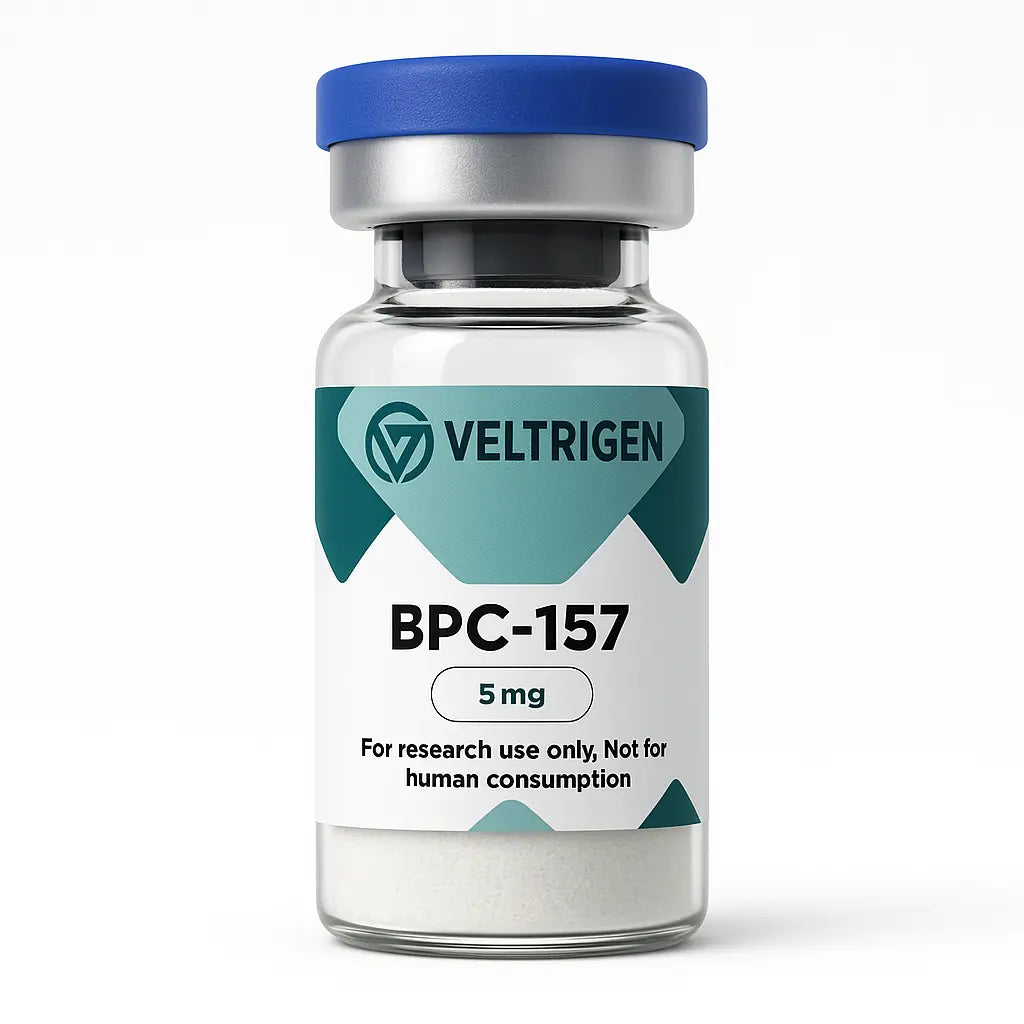
BPC-157 vs TB-500 – Key Differences, Synergy, and Research Insights
Share
In recent years, interest in regenerative compounds has grown within the scientific community. Two peptides often discussed in this context are BPC-157 and TB-500 (Thymosin Beta-4 fragment). Both are studied for their potential roles in repair and recovery, but they differ in structure, mechanism of action, and areas of research focus.
This article reviews published findings from animal studies and experimental models, highlighting their differences, potential synergy, and research significance.
What is BPC-157?
-
Origin: BPC-157 is a synthetic peptide derived from a protein found in gastric juices.
-
Research focus:
-
Angiogenesis (formation of new blood vessels).
-
Gastrointestinal protection in animal models.
-
Soft tissue repair (muscles, tendons, ligaments) in preclinical studies.
-
-
Mechanism: Research suggests it may influence growth factor pathways, nitric oxide production, and cellular signaling related to healing in animal studies.
What is TB-500 (Thymosin Beta-4 Fragment)?
-
Origin: TB-500 is a synthetic fragment of the naturally occurring thymosin beta-4 protein.
-
Research focus:
-
Actin regulation (a protein critical for cell movement and structure).
-
Wound repair and angiogenesis in animal models.
-
Cardiovascular and corneal repair in experimental studies.
-
-
Mechanism: It appears to facilitate cell migration and differentiation, supporting tissue regeneration in research contexts.
Key Differences Between BPC-157 and TB-500
| Feature | BPC-157 | TB-500 |
|---|---|---|
| Source | Derived from gastric protein | Fragment of thymosin beta-4 |
| Research Areas | Gastrointestinal, tendon, ligament, vascular studies | Wound healing, angiogenesis, cardiovascular models |
| Primary Mechanism | Nitric oxide modulation, growth factor signaling | Actin regulation, cell migration |
| Typical Research Models | GI lesions, tendon rupture, vascular repair | Corneal wounds, myocardial injury, dermal repair |
Synergy Between BPC-157 and TB-500
Some researchers suggest that BPC-157 and TB-500 may complement one another in experimental settings:
-
BPC-157: Often associated with localized protective effects (GI tract, tendon, ligament).
-
TB-500: Investigated more broadly for systemic roles in tissue repair and angiogenesis.
-
Combined Research Interest: Their mechanisms may intersect, particularly in wound healing and regenerative models, where angiogenesis and cellular migration are both crucial.
Why Are They Important in Research?
-
Both peptides continue to be explored for their potential in regenerative medicine models.
-
Neither is approved for human therapeutic use, but their presence in preclinical studies reflects growing scientific curiosity.
-
They represent promising tools for researchers studying healing, angiogenesis, and repair pathways.
Conclusion
BPC-157 and TB-500 are two distinct peptides with overlapping areas of research interest. While BPC-157 is more often studied in gastrointestinal and tendon-related models, TB-500 has been linked to systemic repair and cell migration. Together, they offer complementary pathways that continue to attract attention in preclinical research.
⚠️ Disclaimer: The compounds discussed here are for laboratory and research purposes only. They are not approved for human consumption, medical use, or therapeutic application.